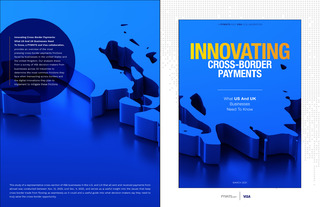More than $120 trillion in payments volume flows each year between business trading partners, and $10 trillion of that volume is cross-border trade.1 The opportunity for businesses to look beyond their own domestic markets for new trading partners is vast, but not without challenges. Many of the frictions that trading partners face when making and receiving payments from other businesses in their local markets are amplified when doing business on a global stage: paper-based workflows, delays in receiving payments, matching payments to remittance data, fraud and a lack of faster payments alternatives for payers and receivers are just some examples.2
In collaboration with Visa, PYMNTS set out to examine the state of cross-border payments in two large economies — the U.S. and the U.K — as well as corporates’ interest in using new payment tools and tech to digitize and streamline those flows.
1 B2B: How the next payments frontier will unleash small business. Goldman Sachs. 2018. https://knowen-production.s3.amazonaws. com/uploads/attachment/file/3460/Global%2BTechnology_%2BB2B_%2BHow%2Bthe%2Bnext%2Bpayments%2B frontier%2Bwill%2Bunleash%2Bsmall%2Bbusiness%2B.pdf. Accessed March 2021.
2 We asked respondents in our survey to cite the challenges that tend to impact the efficiency of their cross-border payments flows. Our study refers to these factors as either “frictions” or “pain points.”


